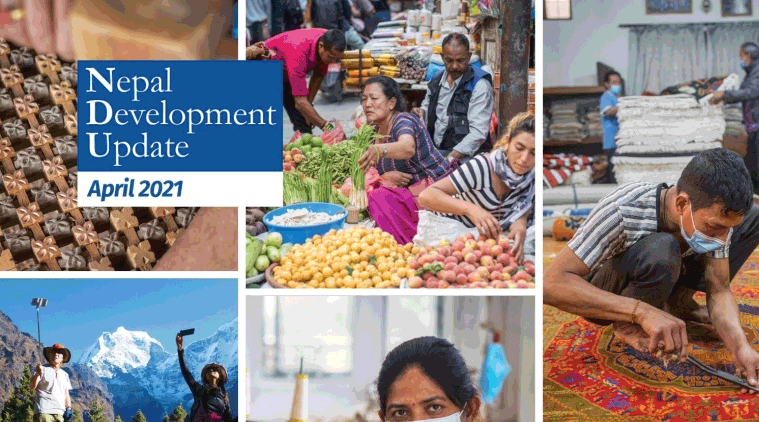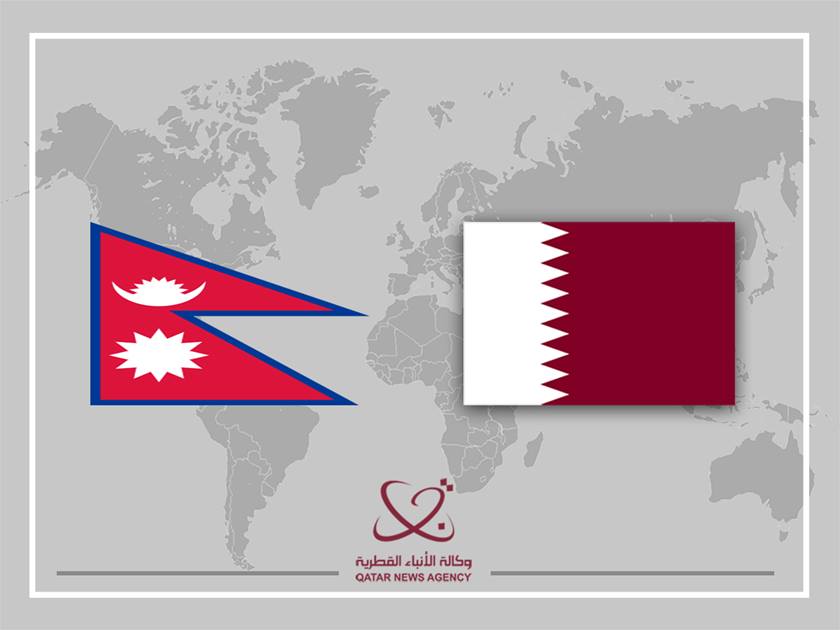
Current Economic Developments
Nepal has been hit hard by COVID-19, albeit the circumstance has improved all the more as of late. As the flare-up got far reaching in mid-2020, a cross country lockdown was carried out from March to July in 2020, trailed by limited lockdowns, remembering for the Kathmandu Valley up until mid-September. During this time transportation, instruction and the travel industry related exercises were fundamentally confined. Since October, the quantity of cases has been declining consistently, permitting a continuous facilitating of development limitations. Nepal dispatched its immunization program on January 27, 2021, and about 5.9 percent of the populace (or 1,791,606 individuals) were vaccinated by mid-March 2021. Along these lines, there are acceptable possibilities that further flare-ups of COVID-19 can be contained.
In the wake of contracting without precedent for a very long time in FY20-by 1.9 percent-the economy gave indications of moderate recuperation in the primary portion of FY21. Action continued in discount and retail exchange, transport, and monetary administrations, while ideal rainstorm drove horticultural development. Notwithstanding, the travel industry stayed at a halt and private venture weak given undeniable degrees of generally speaking vulnerability identified with the pestilence just as political turns of events. Vulnerability emerging from the plague has likewise added to financial dangers because of the level of monetary improvement gave to help people and firms and which should ultimately be moved back for financial maintainability. Political vulnerability likewise elevated in December 2020 when the Prime Minister disintegrated Parliament. The Supreme Court toppled the choice, reestablishing Parliament in February 2021 and accelerating the split of the two-party greater part alliance in March.
Financial difficulty is probably going to affect pay and business. The expanding number of joblessness applications and returning travelers could antagonistically influence progress in destitution decrease. The new World Bank COVID-19 observing study recommends there were far and wide effects of the pandemic on positions and livelihoods, with more than two of each five financially dynamic laborers detailing a frequency of occupation misfortune or delayed work nonappearance. Ladies, youthful specialists, and those occupied with nonagricultural exercises have been the most seriously influenced.
Credit development recuperated as of late, though tolerably. In the wake of the COVID-19 emergency, the national bank brought down its arrangement rate and took extra measures to help credit to the private area, including renegotiating programs for COVID-19-influenced firms. Accordingly, credit to the private area developed by 11.6 percent in the principal half of FY21, still underneath pre-pandemic levels. Over a similar period, stores expanded essentially due potentially to three key elements: higher prudent reserve funds, bringing home of reserve funds by returning transients, and diminished utilization in the midst of social separating measures.
Quieted homegrown interest has added to an improvement in the current record balance. The current record deficiency limited by 39.6 percent year-on-year (y-o-y) in the main portion of FY21, because of a sharp withdrawal in imports (by 11.8 percent) and a recuperation of settlement inflows (which developed by 6.7 percent y-o-y, subsequent to falling by 3.4 percent in FY20). Given restricted measures of unfamiliar direct speculation (FDI), outer concessional credits have basically financed the current record deficiency. The national bank’s unfamiliar trade saves expanded tolerably to US$11.3 billion by mid-January 2021, comparable to 11.3 long stretches of imports.
Spending was higher and income lower, y-o-y, over the principal half of FY21. Higher spending was driven by acquisition of COVID-19-related wellbeing hardware and speculations at the subnational levels, which balance a huge decrease in capital spending at the focal level. In the mean time, incomes fell somewhat. Assessment incomes declined by 2.1 percent y-o-y, with exchange and utilization charges, just as corporate annual expenses performing ineffectively. Non-charge incomes kept on experiencing the close to stop in the travel industry. Thusly, public obligation expanded by 8.2 percent over the primary portion of FY21, comparative with the finish of FY20, to 36.4 percent of the projected FY21 total national output (GDP). Notwithstanding these changes, Nepal stays at okay of obligation trouble.
Viewpoint, Risks, and Challenges
The economy is relied upon to recuperate consistently however step by step from FY21 ahead. Accepting a fruitful immunization rollout locally and universally, and a steady resumption of global the travel industry, genuine GDP is projected to develop by 2.7 percent in FY21 and 3.9 percent in FY22. Development is required to be driven by administrations as friendly separating backs off further, and by agribusiness, on the rear of late ideal rainstorm. Notwithstanding, the pandemic is required to have enduring impacts. Without changes to correct towards a post-COVID-19 the travel industry market that incorporates upgrades to nature-based the travel industry, improved framework for better access, ecological administration and the travel industry expansion, the area may not completely recuperate. This would slow down the development recuperation, restricting its strength. Lukewarm fares of merchandise, and administrations, coordinated against expanding imports, as utilization gets back to business as usual, would augment the current record shortfall to 3.2 percent of GDP by FY22.
The monetary shortage is projected to stay raised yet to settle steadily over the medium term. Income execution is relied upon to stay frail, and extra spending will be needed for financial help measures, inoculations, and the resumption of venture execution. Thus, the monetary shortfall is relied upon to enlarge to just shy of 8% of GDP in FY22 and public obligation is projected to arrive at 46.7 percent of GDP by FY22. Notwithstanding, the country’s obligation will stay practical.
The monetary viewpoint is dependent upon critical drawback hazards. The new political vulnerability, whenever delayed, may additionally subvert speculation estimation. On the potential gain, powerful inoculation missions could work with a resumption of the travel industry and accommodation administrations. A tough recuperation could be additionally upheld by ventures, to improve quality, market access, and business openings for nearby networks in the travel industry and related worth chains.
To moderate disadvantage dangers to the standpoint, it will be basic to address underlying shortcomings in the economy that have been exacerbated by the pandemic. Throughout the long term, settlement inflows have upheld private utilization, neediness decrease, government incomes, and unfamiliar trade holds. Notwithstanding, this weighty dependence on settlements has included some significant pitfalls, driving a genuine enthusiasm for the conversion scale, and subverting send out seriousness while empowering imports. Thusly, frail occupation creation has energized further outmigration, while high imports have brought about a substantial dependence on exchange charges, further debilitating firm efficiency. Creating fares to drive work creation and firm efficiency is subsequently integral to a fast and versatile recuperation. This will require more elevated levels of much required FDI to use specialized expertise and abilities from abroad. Reciprocal changes to advance fares would likewise be required, remembering speculations for tough framework to close existing holes that subvert development. Ventures could likewise go to foster high worth the travel industry designated at the mid-range portion and zeroed in on nature-based the travel industry to help local area jobs and protection. This thus would uphold greener development, versatility, and consideration.
Special Focus― Harnessing Export Potential for a Green, Inclusive, and Resilient Recovery
The Special Focus segment of this report investigates alternatives to advance exchange, especially through sends out, as a groundbreaking pathway to help Nepal’s tough recuperation. In the course of recent many years, Nepal’s fare development has been stale. Undoubtedly, with send out development at 4% on normal since the turn of the century, Nepal highlights among the 20 nations on the planet with the most un-powerful fares. More grounded fares could help increment Nepal’s monetary versatility, and speed up recuperation from the staggering stun that the COVID-19 pandemic has postured for the private area. Fares cannot just carry unfamiliar cash into the economy to back all around required imports, yet in addition prod the production of “steady employments” in higher worth added exercises. Without a doubt, send out direction will in general drive usefulness gains through expanded scale and openness to refined worldwide customers.
This report assesses Nepal’s undiscovered fare potential or “missing” trades at around US$9.2 billion, 12 times its genuine yearly product exports. Understanding that potential is reachable in the medium term. Had Nepal’s fares developed at the normal of the South Asia area since 2000, the hidden fare potential would have been diminished by 73%. This fare potential addresses a chance to make an expected 220,000 new positions, with huge ramifications for efficiency development.
For Nepal to accomplish its fare potential, six key needs should be handled. In the first place, Nepal should change the travel industry area to meet the normal changes to request and inclinations, following the pandemic. A fast and strong recuperation of the area could come to fruition through speculations to improve arranging, protection, and tough framework. It would likewise involve coordination with the private area to redesign abilities and foster nature-based the travel industry that is naturally practical, with potential to help occupations creation and comprehensive development. Second, to draw in FDI, significant for joining into provincial and worldwide worth chains, it will be essential to rearrange and smooth out measures for multinationals setting shop in Nepal, just as effectively participate in monetary discretion to draw in FDI. Third, modernizing trade advancement will expect connections to digitization, disentanglement of cycles, abilities improvement, and motivators for exporters. Fourth, a decrease of exchange costs will be basic, especially given the country’s landlocked area and the sloping territory. This would involve decreasing boundary getting blockage through overhauled foundation and smoothed out methodology and cycles. Additionally, decreasing import obligations – especially on crude materials and intermediates – is critical to guarantee exporters approach the most proficient contributions at world costs. Fifth, speculations to improve phytosanitary framework will be required for expanded principles and security of fares. 6th, measures to support advanced exchange, and online business when all is said in done – might actually be a distinct advantage for Nepal – through receiving a vigorous arrangement system. This would incorporate, entomb alia, productive homegrown and cross-line computerized installment frameworks, and buyer security and information protection guidelines lined up with global practices.



